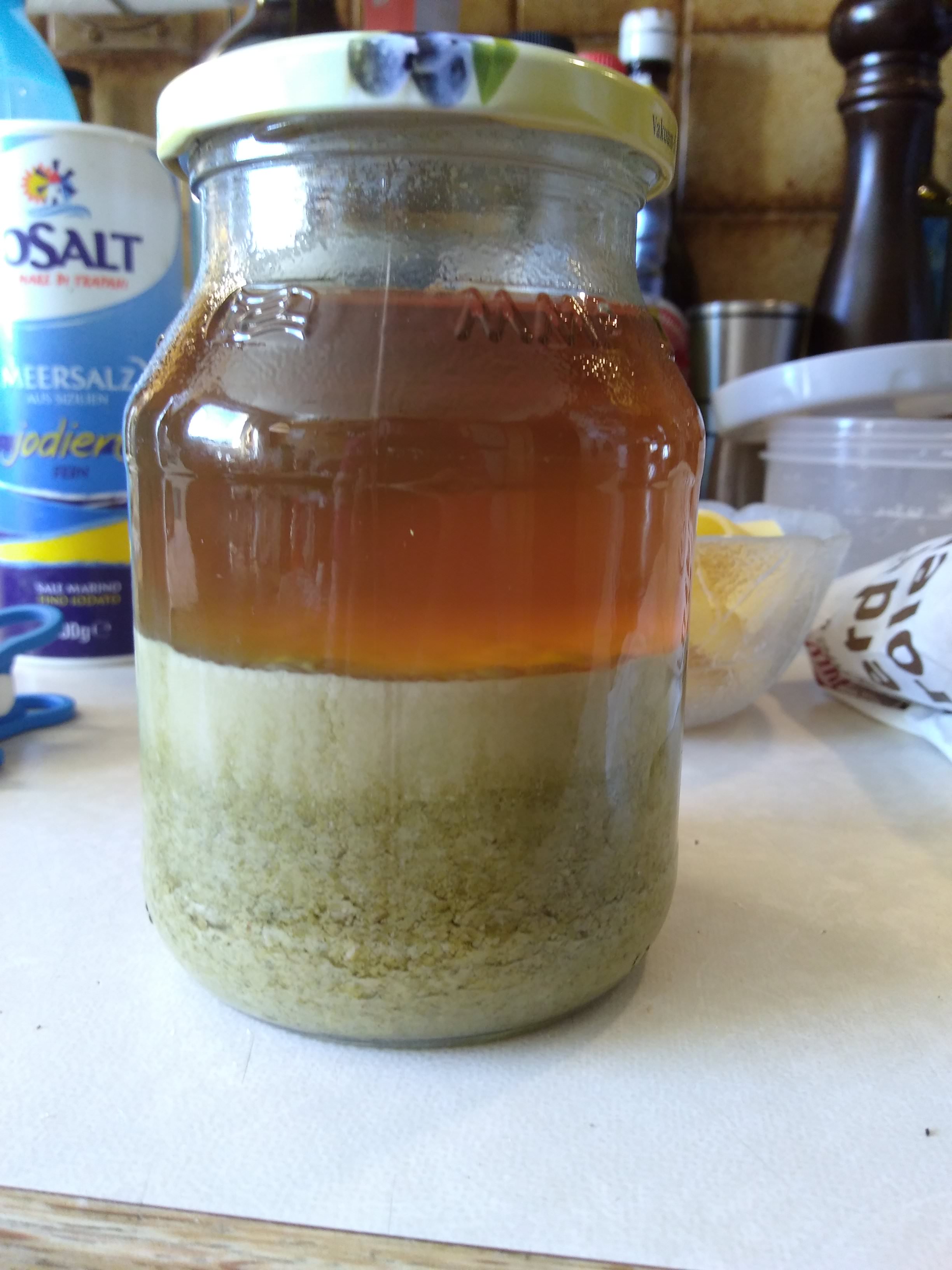BandonBrewingCo
Well-Known Member
Looking at the middle layer the lack of stratification has me wondering if it is indeed yeast or just proteins and gunk? Also, now I've added a hop sock for dry hopping to my shopping list.













![Craft A Brew - Safale S-04 Dry Yeast - Fermentis - English Ale Dry Yeast - For English and American Ales and Hard Apple Ciders - Ingredients for Home Brewing - Beer Making Supplies - [1 Pack]](https://m.media-amazon.com/images/I/41fVGNh6JfL._SL500_.jpg)




I would decant as much liquid as possible and pitch it. CheersHi all. Stumbled on this thread as i am considering re-using my yeast.
I have the abiltiy and have done starters before. Have a stir plate, dme, nutrients, etc.
However, once i found a lhbs with very fresh Imperial 200 billon cell count packs, i have stopped making starters and my beer has gotten much better (may not be a direct correlation as i am still learning).
Anyhow... any thoughts on this yeast? Was a traditional hefe (no dry hop) that i saved in a sanitized 1L flask. (From a conical). It has been kept in a very cold (a few °f above freezing) beer fridge for a few weeks.
(Stefon Imperial)
Does this look like i can:
-just direct pitch all
Or
-pour off the top wort and pitch the yeast cake?
Or
-does this require a starter? (I understand there are various opinions on this question)
Thanks all!View attachment 655862 View attachment 655863
Would it be in any way beneficial to siphon off the liquid in the top layer?I agree with the above. I did a starter, once, with liquid yeast. The beer turned out fine, but I've had much better luck (and less hassle) with just pitching slurry that's been saved properly. I once even pitched yeast from a very dark stout onto a light IPA and had no issues. I was washing yeast for a while, but I have much better things to do with my time.
No need to siphon, just carefully pour it off.Would it be in any way beneficial to siphon off the liquid in the top layer?
No need to siphon, just carefully pour it off.
So because of the compactness of the yeast, the top pours off easily?just carefully pour it off.
Yup. I personally prefer to overbuild my starters saving some for next time however. CheersSo because of the compactness of the yeast, the top pours off easily?
Full disclosure, I don't save yeast. I do get a very nice, compact yeast in the primary though. I look at it and wonder how vital it is--and then I flush the poor thing down the toilet. I'm a murderer.
Ha ha!!So because of the compactness of the yeast, the top pours off easily?
Full disclosure, I don't save yeast. I do get a very nice, compact yeast in the primary though. I look at it and wonder how vital it is--and then I flush the poor thing down the toilet. I'm a murderer.
So because of the compactness of the yeast, the top pours off easily?
Full disclosure, I don't save yeast. I do get a very nice, compact yeast in the primary though. I look at it and wonder how vital it is--and then I flush the poor thing down the toilet. I'm a murderer.
It doesn't sound so difficult when you explain it that way. I laughed about the meth lab part. I heard here that reusing dry yeast was a no-no? I'm going to do a liquid Belgian yeast soon and will apply what I've learned here.This is one way of creating your own strain of yeast, adapted to your beer recipe.
That's what i did... decanted as much liquid as i could, let it warm up a bit, then pitched it.
I then added oxygen via a carb stone.
It smelled great (like the strain should) and here's hoping it takes off!!
Thanks all for the advice & help!
Buy a 500g brick of US05 then.Just to throw my 2c in on how I've made life much easier for myself...
I got my hands on some Voss Kveik for utility purposes:
Bear in mind, I don't really go chasing esters (only in wheat beer). I just have 3 solid house beers that I brew (Pale Ale, Wheat and Fake Pilsner) and if I had an endless supply of US05 with no lag time that's all I would ever use for the Pale Ale. The odd time I might go for a Stout or Saison or something else but not if I need to spend a tenner on the yeast that I might not use again for a year at least.
- I only have a crappy IC chiller so getting down to 20C in summer is a pain in the hole (shipping Jaded to Europe is too expensive).
- If I do get down to 20C, Voss is very clean. I can under pitch and/or ferment at a higher temp if I want esters.
- I harvest from a brew with little or no dry hops that hasn't pushed the yeast hard, then grab a bit (tablespoon or two) of that and get a vitality starter going on brew day. This means no worrying about hops in yeast harvest. Less harvesting to do in general, etc etc.*
- Having a house yeast that I use for most of my beers keeps the yeast active. By Kveik standards, that's mega fresh & active.
*This post went on a bit longer than I planned. This point was what I wanted to say initially.
Buy a 500g brick of US05 then.
...and It's Alive!!! Ha ha ha!!!
Thanks all! If this batch comes out i will have to invest in some mason jars... (lid loose of course!)
Buy a 500g brick of US05 then.